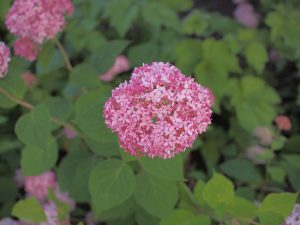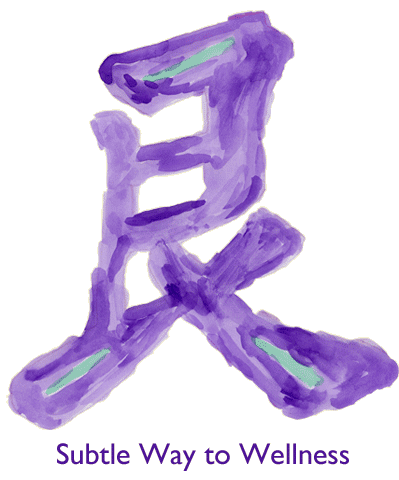
Herbs have been relied upon for the healing of ailments for thousands of years. The focus of herbology is to support the body’s self healing ability. Herbs nourish us physically, mentally, emotionally, and spiritually. When we take herbs the essence enters the acupuncture meridian and adjusts the vital flow of energy in the body. Herbs are strong foods, so by eating them we enrich ourselves with a vast array of nutrients. The energetic classification of herbs is a science which has been refined over the last 3000 years.History of Chinese Herbology
The history of Chinese Herbology dates back to the writings of the Yellow Emperors Inner Classic ( Huang Di Nei Jing). This work of art is a dialogue between the Yellow Emperor (2697-2597 B.C.) and his physician Qi Bo, in which they discuss the whole spectrum of Chinese Medicine- including topics such as Acupuncture, Yin-Yang, Five Elements pathology, diagnosis, and etiology of disease. The work was compiled around 305-204 B.C..The Inner Classic is the foundation for theory and philosophy of Traditional Chinese Medicine.
Chinese Herbal Medicine is a compilation of experimentation and research dating back to a tribal chief named Shen Nong who resided in China along the great Yellow River Plateau (2700B.C.). He is famous for ingesting many substances to record first hand their effect. In all, he recorded around 365 healing substances and wrote the first book on Traditional Chinese Herbal Medicine compiled around 206B.C.(The Classic of Materia Medica- Shen Nong Ben Cao Jing.
The historical tradition continued with the work of a famous physician who lived around the third Century A.M. named Zhang Zhong Jing. He was one of the most celebrated Chinese physicians who compiled two classics- (Shang Han Lun-Discussion of Cold Induced disease) and (Jin Gui Yao Lun-Synopsis of Prescriptions of the Golden Chamber) These works are still referenced today for the diagnosis, treatment, and differentiation of yin-yang and 6 stages.
Chinese Medicine is a branch of the Taoist healing arts which include Acupuncture, Tai Qi Chuan, meditation, Chi Gong, astrology, I Ching, and Geomancy. Around 452 A.M. a Taoist named Tao Hong Jing contributed to Chinese Herbal Medicine by editing the original Classics of Materia Medica according to kingdom – plants, animal, etc. He also increased the total entries to 730 substances.
In 1618 A.M. during the Tang Dynasty the government contributed by compiling the first official Materia Medica
named Xin Xiu Ben Cao. This great work includes 844 illustrated pages.
During the Sung Dynasty ( 960-1279 A.M.), a physician named Tang Shen Wei increased the Materia Medica to 1746 substances.
By 1590 A.M. the most comprehensive medical book named Grand Materia Medica-(Ben Cao Gang Mu) was compiled by Li Shi Zhen. With over 52 volumes, and 30 years over research,it includes 1892 substances with over 100 illustrations and 10,000 prescriptions
Today the Materia Medica is being further refined by clinical and scientific data. Most of the research is being done in China as well as the U.S.A.. Each herb is listed with the properties, acupuncture meridian entered, functions, clinical use, major combinations, dosage,and pharmacological research-such as anti microbial effect, anti viral effect, anti fungal effect, effect on blood pressure, effect on smooth muscle, endocrine effect, central nervous system effect, use in gynecology, etc.
The Energetic Nature of Herbs
ENERGIES
The energies are Warm, Hot, Cold, Cool, and Neutral
For illness with a cool nature the formula will be warm. For disorders with a hot nature the formula will be cold etc.
FIVE TASTES
The taste of the helps send the nutrition the the designated organ via the acupuncture meridian
The five tastes are sour, bitter, pungent, sweet, and salty.
Sour herbs are astringent, and herbs in this category consolidate Qi and secretions so good for conditions like diarrhea, excessive perspiration etc. Sour herbs nourish the Liver and Gallbladder
Bitter herbs are drying, detoxifying, antibiotic, and drain Qi downward. Bitter herbs strengthen the Heart and Small Intestine
Sweet herbs are tonic, nourishing, relaxing, and slow Qi down. Sweet herbs harmonize the Spleen and Stomach
Pungent herbs stimulate, increase circulation, invigorates, warms the body,, raise Qi from the interior to the exterior. Helps to dispel pathogens by its dispersing quality and opening the pores. Pungent herbs strengthen the Lungs and Large Intestine.
Salty herbs -Softens hardening in the body like lumps, cysts et. It lubricates the intestines, so salty herbs are good for constipation.
WORKING DIRECTIONS
Ascending
Descending
Examples:
- Kudzu -up and out
- Rhubarb -descending
- Plantago – descending
MERIDIAN ENTRANCE
Herbs working place.
e.g. Ginseng -Strengthens Qi via the kidney channel. It is sweet and warm so it strengthens the yang active energies of the body.
Single Herb Energetics
In order to prescribe herbal formulas, the Acupuncturist must have an extensive knowledge of the energetics of single herbs.
Here are examples of the energetics of herbs.
Shan Yao (Discover) Rhizome Dioscorea
Part used- Root
Temperature -Neutral
Taste- Sweet
Functions- Strengthens Spleen Qi
Nourish Yin- (Stomach, Spleen, Lung, Kidney)
Symptomatic function- Stops Diarrhea (astringent quality)
Applications- Spleen Qi Deficiency syndrome
Lung Qi deficiency syndrome
Diabetes
Nocturnal emissions, leukorrhea, etc.
Dang Gui (Angelica) Radix Angelica
Part used- Root
Temperature- Warm
Taste- Pungent, sweet
Functions-
Tony blood
Move blood Stagnation
Calms the mind
Relieves pain
Regulates menstruation
harmonize female hormones
Laxative- (moistens the intestine)
Applications-
Blood Deficiency Syndrome: Anemia,unhealed wound,skin disorder, pain
Blood stagnation syndrome
PIs, irregular menstruation, constipation
HERBAL FORMULATIONS
The strength of Chinese Herbology over other healing systems is the combining of the single herbs into a formula. Herbal formulas have a much wider scope than single herbs and the formula can be tailored to meet the patient’s need.
Formulas range from approx. 2 -20 herbs.
Herbs in the formulas are broken into certain categories. They are:
Jung -King – Herbs that play the most important role in the formula. King herbs work on the main syndrome.
Cheng – Minister – minister herbs help the king herbs with the main syndrome and secondary syndrome.
Zhua -Assistant – Assistant herbs work with the minister herbs on the secondary syndromes or main syndrome.
Shi -Messenger – Messenger herbs:
- Helps to harmonize the relationship of other herbs.
- Increase the effect of other herbs
- Guide the herbs to the meridian entrance and specific parts of the body.
Chinese herbs are formulated in many ways.
Raw herbs that are cooked by the patient and then strained and taken as a tea
Herbs are extracted and then made into tablets
Herbs are extracted and taken as a powder
Herbs are extracted in alcohol and the made into a tincture.
I’m a student of many systems of herbology. Most herbal systems are more symptomatic in application. Chinese herbology is more focused on the energetic imbalance. It is also very well organized. Each single herb and formula are organized in specific categories based upon a particular syndrome.
Chinese herbology is a fascinating subject. Please please feel free to contact with any questions.
